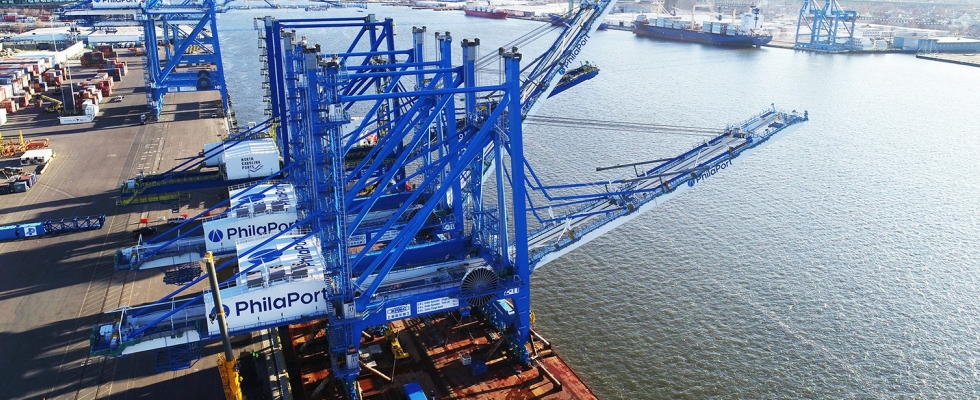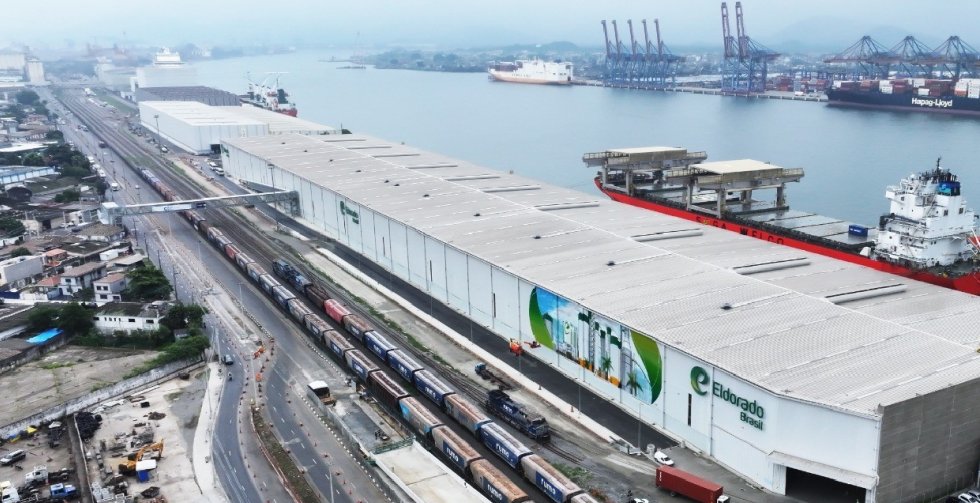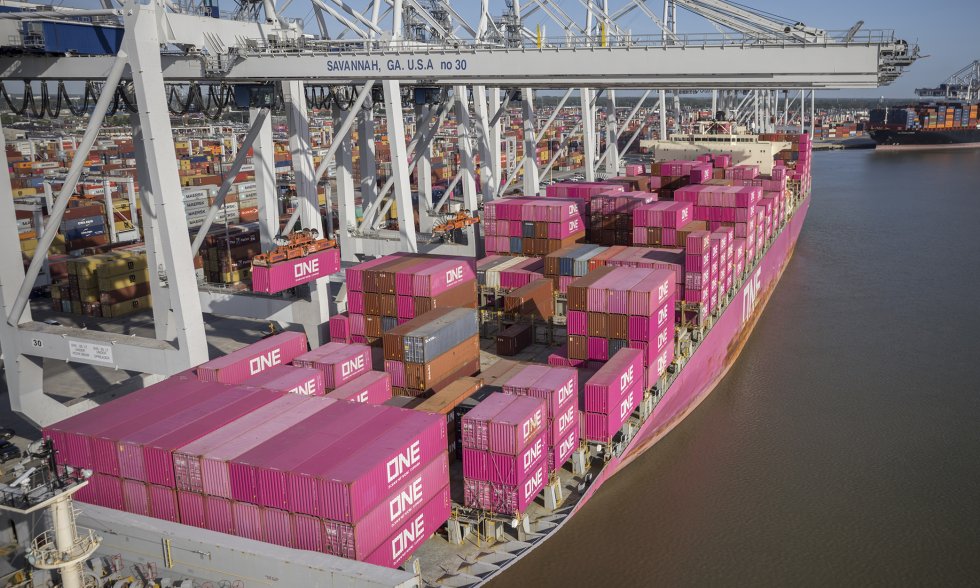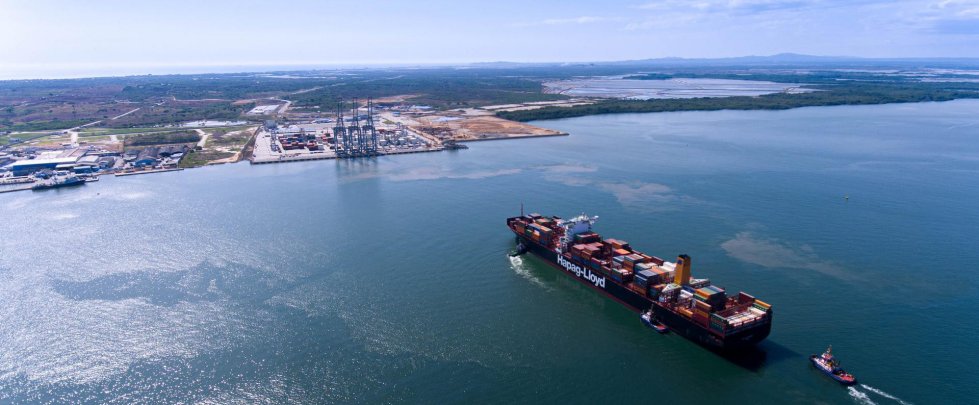|

PhilaPort Receiving $217 Million in Federal Funding to Expand Port; Increase Efficiency
Sept. 24, 2024 - The Philadelphia Regional Port Authority (PhilaPort) is receiving a total of $217,000,000 in funding to expand the operational capacity of the SouthPort terminal, along with increasing efficiency of shipment handling. This award is from the National Infrastructure Project Assistance (MEGA) Program, which was created and funded by the Infrastructure Investment and Jobs Act (IIJA).
On Sept. 20, U.S. Senators Bob Casey (D-PA) and John Fetterman (D-PA) and U.S. Representatives Mary Gay Scanlon (D-PA-5), Dwight Evans (D-PA-3), and Brendan Boyle (D-PA-2) announced the funding for PhilaPort.
“This funding will improve Philadelphia port infrastructure and will allow greater efficiency in handling and transporting goods,” said Congressman Boyle. “Most of all, this funding will create jobs by increasing trade, and enhancing global competitiveness. Philadelphia ports must always be kept updated and modernized to remain competitive in both the regional and global supply chain economy.”
The funding will expand PhilaPort’s operational capacity by creating more space for vessels to dock at the port and increase on and offloading efficiencies. Specifically, this funding will support the construction of a second berth, which will improve the port’s ability to on and offload goods from ships.
Additionally, the funding will support infill construction, which will expand the port by approximately ten acres.
PhilaPort, The Port of Philadelphia, is an independent agency of the Commonwealth of Pennsylvania charged with the management, maintenance, marketing, and promotion of port facilities along the Delaware River in Pennsylvania, as well as strategic planning throughout the port district.
SOURCE: PhilaPort |
|
Port of Port Arthur Names Andy Powell as Deputy Director
 Aug. 30, 2024 - The Port of Port Arthur has named Andy Powell as Deputy Director. Powell brings decades of maritime industry experience to the port, most recently holding leadership positions within G2 Ocean and its predecessor companies, Star Shipping and Grieg Star, in Atlanta, Georgia. Aug. 30, 2024 - The Port of Port Arthur has named Andy Powell as Deputy Director. Powell brings decades of maritime industry experience to the port, most recently holding leadership positions within G2 Ocean and its predecessor companies, Star Shipping and Grieg Star, in Atlanta, Georgia.
Powell’s global management experience includes tours of duty in Bergen, Norway; Rio de Janeiro, Brazil; and Vancouver, Canada, before returning to the U.S. in 2010. He is a well-respected industry professional with extensive experience in international business, customer relations, and ocean carrier operations.
“Andy brings a wealth of knowledge and experience that will benefit our Port’s continued growth. We are excited he joined our team,” said Larry Kelley, Port Director/CEO, Port of Port Arthur.
Powell stated, “I see a significant opportunity for continued and sustainable growth. With new infrastructure and a customer-focused approach, the port is an incredibly important asset with an ability to serve domestic and foreign markets.”
Powell is a current board member of the International Forest Products Transportation Association (IFPTA). He is a past member of the Trade and Transportation Advisory Council to the Atlanta Branch of the Federal Reserve and recently served on the board of the West Gulf Maritime Association (WGMA).
Powell holds a bachelor’s degree from the University of South Carolina.
The Port of Port Arthur is a leader in the breakbulk industry and a major economic engine of Southeast Texas. Located on the Sabine Neches Waterway, with a 48-foot channel deepening project under construction, the Port recently completed 1,000’ of new rail-served dock with open backlands.
SOURCE: Port of Port Arthur |
|

Eldorado Brasil Celebrates One Year of Operations at New EBLog Terminal in Santos
Aug. 27, 2024 - Eldorado Brasil Celulose recently celebrated the first year of operations at the Eldorado Brasil Logística (EBLog) port terminal in Santos, São Paulo, Brazil. The anniversary brings with it a 30% increase in average shipping productivity, when compared to the activities carried out at the previous terminal. The twelve-month record was set in March of this year, when 21,000 tons were shipped in a single day, on two fronts.
In order to provide an outlet for the pulp, the figures for the first year are impressive: more than 20,000 trucks unloaded; around 2,000 containers stuffed (loaded); more than 60 ships operated, with an increase of more than 45% in the volume of pulp shipped in the break bulk mode (loose cargo) compared to the previous terminal.
The site has 150 employees and has capacity for up to 72 rail wagons, as well as berthing two ships simultaneously.
"With the new terminal, Eldorado Brasil has seen an extraordinary gain in logistical competitiveness,” said says Flávio da Rocha Costa, Logistics Director at Eldorado Brasil's EBLog. “We gained autonomy and agility and collaborated with the economic and social development of the city of Santos."
In line with the integration of Port and City, Eldorado is presenting three artistic panels over 10 meters high, painted and signed by the artist Jabah, representing the eucalyptus plantation, the forest and Eldorado's pulp mill, adding color and life to the port region.
Another significant milestone, which is part of the EBLog Terminal's one-year anniversary, is the construction of the pedestrian walkway, located on Avenida Governador Mário Covas Júnior, which is very busy and close to the terminal. In July of this year, the walkway, which received an investment of R$5 million from Eldorado Brasil, became part of the local urban landscape.
Eldorado Brasil Celulose produces an average of 1.8 million tons of high-quality pulp per year, meeting the most demanding standards and certifications in the international market.
SOURCE: Eldorado Brasil Celulose |
|

ONE Modern Inaugurates New Savannah-India Connection
June 22, 2024 - Ocean Network Express’ ONE Modern, the first ship on the ocean carrier’s West India North America (WIN) service, called on the Port of Savannah on June 18, establishing the latest connection between India and Georgia Ports.
“This new offering from ONE is a recognition of India’s growing role as a manufacturing hub,” said Georgia Ports Authority President and CEO Griff Lynch. “As the world’s most populous country, with a growing consumer class and significant infrastructure investment, India represents a remarkable opportunity for trade via Savannah.”
Lynch said deliveries from India to the U.S. East Coast are more efficient than U.S. West Coast routes. Even with current vessel diversions around Africa, GPA reaches inland markets across the U.S. Southeast and Midwest three to five days faster than U.S. West Coast ports.
“The WIN Service offers our valued customers a weekly routing from Nhava Sheva and Mundra to the U.S. East Coast. This new service to the Port of Savannah demonstrates ONE's commitment to this important and growing market, providing reliability and flexibility to our customers,” said Dan Sheehy, ONE Senior Vice President, Product & Network.
The new WIN service offers a weekly route from Bin Qasim, Hazira, Nhava Sheva and Mundra to New York and Savannah.
The addition of the WIN service from ONE brings the Georgia Ports Authority’s direct weekly India services to four, while a total of eight services connect Savannah to the Indian Subcontinent. The service is provided by a fleet of nine vessels, all of which are operated by ONE.
SOURCE: Georgia Ports Authority |
|

DP World Announces Major Investments in Latin American Ports to Boost Capacity and Efficiency
June 10, 2024 - DP World is making significant investments in its port terminals in Peru and Ecuador to enhance capacity and operational efficiency, reinforcing its strategic vision for Latin America and providing additional trade opportunities for its customers.
The expansions come amidst an increasingly complex global supply chain landscape, as leaders are seeking ways to mitigate risks and enhance resilience. Situated on the West Coast of South America, Peru and Ecuador are pivotal to DP World’s global strategy, serving as key gateways to international trade.
Carlos Merino, CEO of DP World in Peru and Ecuador, said: “DP World remains committed to creating resilient and efficient logistics solutions. Peru and Ecuador’s strategic locations provide reliable connections from the west coast of South America to major global markets. This substantial investment in port infrastructure and state-of-the-art equipment underscores DP World’s dedication to enhancing capacity, operability, and economic contributions in this vital region.”
The company is set to celebrate two major milestones in the next few months: the inauguration of the completed Bicentennial Pier expansion project at its operations in the Port of Callao in Peru, and the initiation of a berth expansion project at the Port of Posorja in Ecuador.
In Peru, the Bicentennial Pier expansion at DP World Callao will significantly increase the terminal's capacity by 80%, transforming it into a premier logistics hub on the west coast of South America. The $400 million project extends the pier to 1,050 meters, enabling it to accommodate up to three vessels simultaneously and increasing its annual capacity to 2.7 million TEUs (20-foot containers).
The expansion also includes state-of-the-art electric-powered equipment and the first electric charging station for trucks in Latin America, promoting sustainable logistics solutions.
DP World Callao handles 60% of the country’s containerized cargo, solidifying the port’s position as the economic heart of Peru. In addition, DP World operates the Port of Paita in northern Peru, enhancing the country’s connectivity to global markets.
In Ecuador, DP World is planning to expand its berth at the Port of Posorja to enhance capacity and operational efficiency. Earlier this year, the deepwater port received three key service routes from Maersk, strengthening its strategic role in connecting Latin America with global markets. The $140 million expansion will extend the port to 700 meters of berth space and integrate advanced port equipment to ensure that Posorja remains a competitive, secure, and sustainable public terminal.
DP World operates a Special Economic Zone located next to the port of Posorja, further bolstering the nation’s trade capabilities.
Merino added: “DP World’s investments in Latin America encompass private capital infusion, job creation, and social and environmental initiatives. These investments align with global market trends where clients demand efficient, safe, and sustainable ports and logistics solutions.”
The company’s investment extends to Chile as well, where DP World San Antonio is undergoing a pilot project to test the MoorMaster NxG, a mooring system that consists of automated vacuum pads that moor and release vessels within seconds. DP World San Antonio will be the first terminal in the Americas to utilize this system.
These strategic investments reflect DP World's commitment to advancing Latin America's role in global trade, enhancing regional connectivity, and fostering sustainable economic growth.
SOURCE: DP World |
|
|